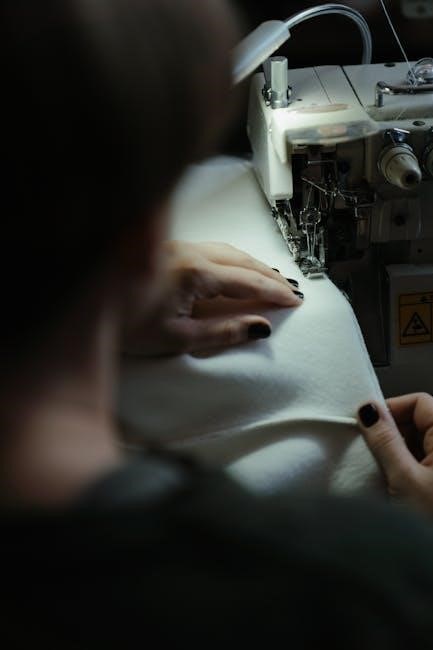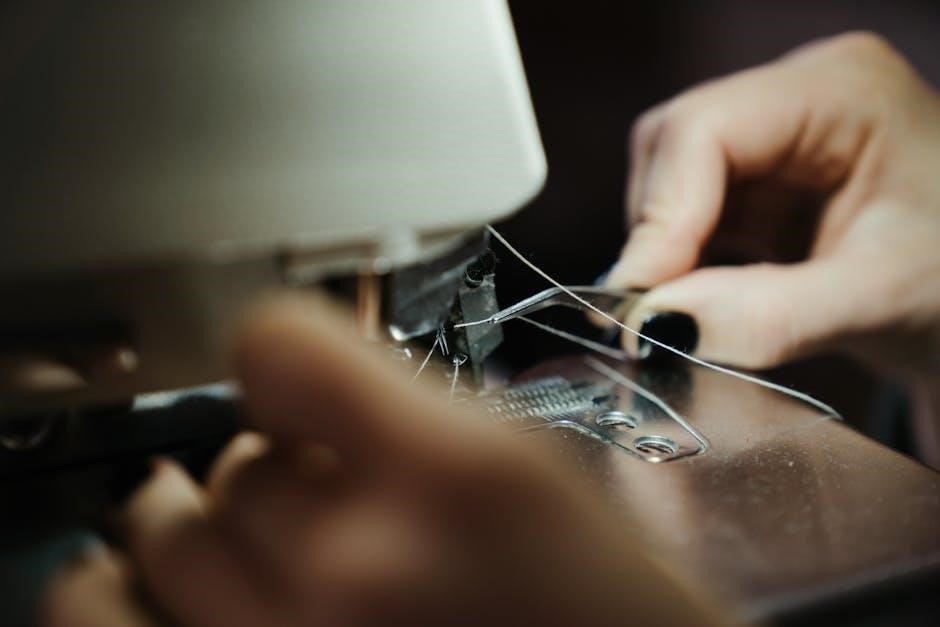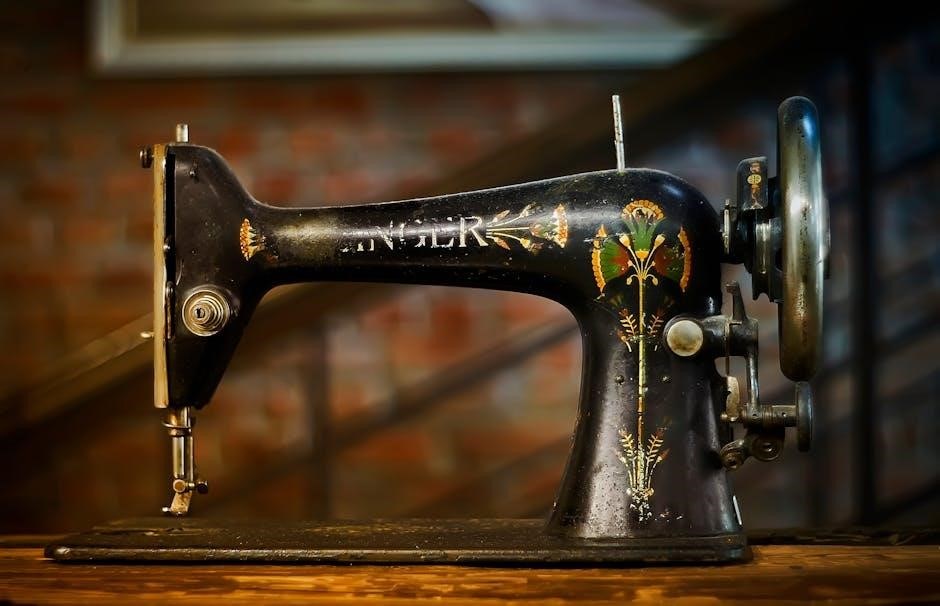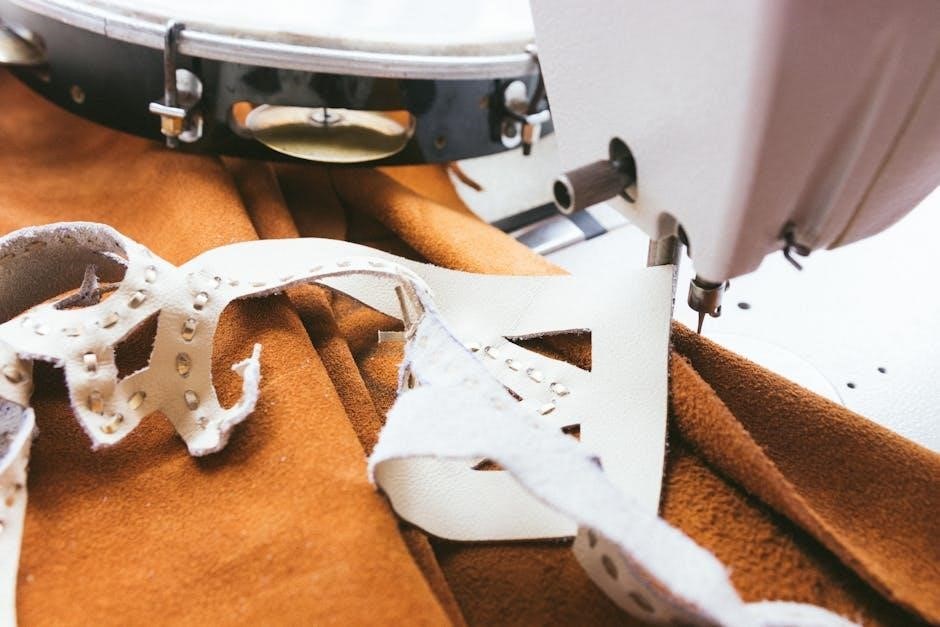singer sewing machine troubleshooting guide
Summary
Fix your Singer sewing machine with our UK troubleshooting guide, solving common issues quickly and easily

To troubleshoot singer sewing machines, start by identifying common issues and understanding machine basics, using online resources and guides for optimal performance and repair, every time, always successfully now.
Understanding Common Issues
Understanding common issues with singer sewing machines is crucial for effective troubleshooting. Many problems can be resolved by identifying the root cause of the issue. Common issues include thread breakage, tension problems, and motor issues. To resolve these issues, it is essential to have a good understanding of the machine’s mechanics and how to perform basic maintenance tasks. Regular cleaning and lubrication of the machine can help prevent problems from occurring. Additionally, using the correct type of thread and needle for the fabric being sewn can also help prevent issues. By understanding the common issues that can arise with singer sewing machines, users can take steps to prevent problems and ensure their machine continues to function properly. This knowledge is essential for anyone who uses a singer sewing machine, whether it is for personal or professional use, and can help extend the life of the machine. Proper care and maintenance are key to optimal performance.

Troubleshooting Breaking Thread
Thread breaks due to incorrect tension, poor quality thread, or misaligned needles, requiring adjustment and inspection of machine settings and components to resolve the issue quickly and effectively always.
Identifying and Resolving Thread Breakage Problems
To identify thread breakage problems, inspect the machine’s thread path and tension discs for any signs of wear or damage, and check the thread quality and type to ensure it is suitable for the fabric being sewn.
Regular maintenance, such as cleaning and oiling the machine, can also help prevent thread breakage by reducing friction and wear on moving parts.
Additionally, using the correct needle size and type for the fabric can help reduce thread breakage, as can adjusting the machine’s tension settings to ensure even and consistent thread delivery.
By following these steps and taking a systematic approach to troubleshooting, users can quickly identify and resolve thread breakage problems, getting their machine up and running smoothly again.
This helps to minimize downtime and ensure that sewing projects are completed efficiently and effectively, with professional-looking results.

Adjusting Singer Sewing Machine Tension
Proper tension adjustment is crucial for smooth sewing, using online guides and tutorials for accurate settings always.
Importance of Proper Tension for Smooth Sewing
Proper tension is essential for achieving smooth sewing results, as it directly affects the quality of the stitches. When the tension is correctly adjusted, the stitches will be even and consistent, resulting in a professional-looking finish. On the other hand, incorrect tension can lead to a range of problems, including loose or tight stitches, bunching or puckering of the fabric, and even breakage of the thread. To achieve proper tension, it is necessary to understand the different factors that can affect it, such as the type of fabric being used, the weight of the thread, and the type of stitch being sewn. By adjusting the tension accordingly, sewers can ensure that their projects turn out smoothly and evenly, with a minimum of frustration and waste. Proper tension adjustment is a skill that takes practice to develop, but with patience and experience, sewers can master the technique and achieve beautiful results.

Motor Problems and Solutions
Motor issues require checking power cords and plugs, ensuring secure connections, for optimal performance and repair, every time, always successfully, with simple solutions, and basic maintenance, now and always.
Diagnosing and Fixing Motor Issues for Optimal Performance
To diagnose motor issues, start by checking the power cord and plug for any damage or wear, and ensure they are securely connected to the machine and power source.
Next, check the motor itself for any signs of damage or overheating, and consult the user manual for guidance on troubleshooting and repair.
Regular maintenance, such as cleaning and lubricating the motor, can help prevent issues and ensure optimal performance, and it is also important to use the correct type of oil or lubricant recommended by the manufacturer.
Additionally, checking the machine’s electrical components, such as the fuse or circuit breaker, can help identify any issues with the motor, and replacing any damaged or worn-out parts can help resolve the problem.
By following these steps and taking regular maintenance, you can help diagnose and fix motor issues, and ensure your singer sewing machine runs smoothly and efficiently, and provides optimal performance, every time, always successfully, now and always, with simple solutions.

Advanced Repairs for Singer Sewing Machines
Advanced repairs require specialized tools and knowledge, including timing adjustment and replacement of complex parts, for optimal performance and longevity, every time, always successfully, now and always, with expertise.
Timing Adjustment and Other Specialized Repairs
Timing adjustment is a critical aspect of singer sewing machine repairs, requiring precise calibration to ensure proper stitch formation and machine operation. This process involves adjusting the machine’s timing mechanism to synchronize the movement of the needle and hook, which can be a complex and delicate procedure. Other specialized repairs may include replacement of the machine’s drive system, repair of the tension discs, and adjustment of the machine’s take-up lever. These repairs often require specialized tools and expertise, and may involve disassembling the machine to access the affected components. By performing these repairs correctly, users can restore their singer sewing machine to optimal working condition, ensuring smooth and reliable operation. Regular maintenance and repair can also help to prevent problems from occurring in the future, reducing downtime and extending the machine’s lifespan. Proper timing adjustment and specialized repairs are essential for achieving professional-grade results.